Trying to cut production costs often leads to cheap products that nobody wants. This pain forces brands to choose between high costs or low quality. True cost-effectiveness comes from smart manufacturing, not cutting corners.
Manufacturers produce cost-effective grip socks by optimizing yarn blends, using efficient production methods like automated screen printing, and sourcing high-quality silicone in bulk to balance cost with durability.
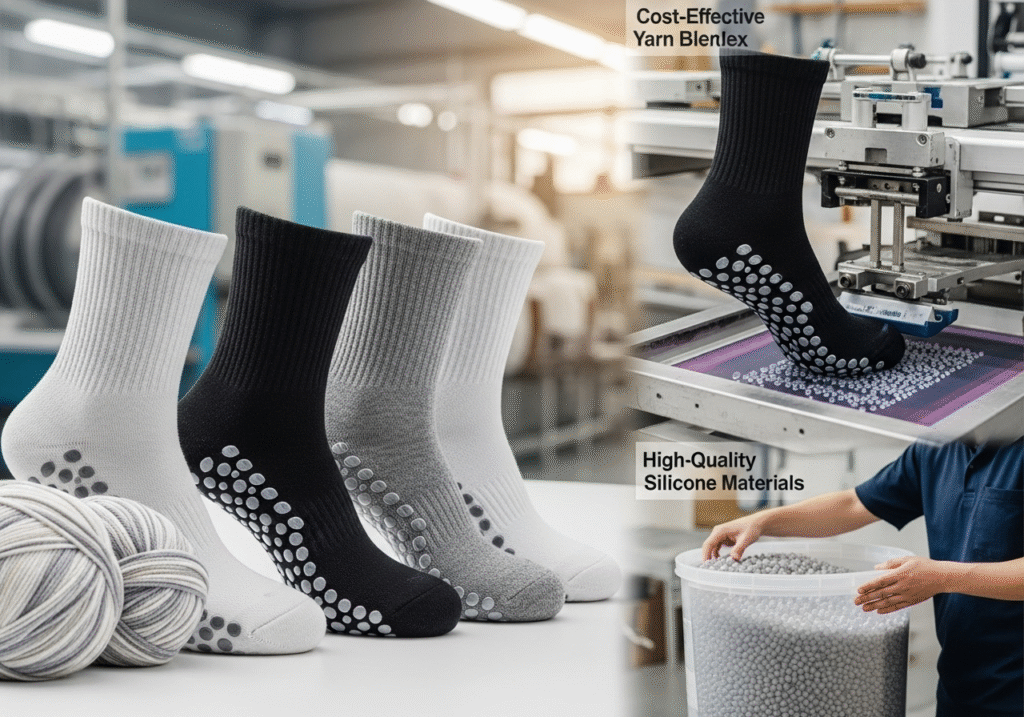
When I started in a sock factory, I saw firsthand how small decisions on the production line changed the final product. A foreman once saved a few cents per unit by using a cheaper grip material. Six weeks later, a huge shipment was returned because the grips peeled off after one wash. That lesson stuck with me. Now, my goal is to help partners like you understand how to build a quality product affordably.
Why Are Grip Socks So Expensive?
You see the high price tag on store shelves and wonder how to compete. Customers feel that pain, too, asking why they should pay so much more for a pair of socks.
Grip socks are more expensive due to specialized silicone materials, a multi-step manufacturing process that includes grip application, and stricter quality control to ensure safety and durability.
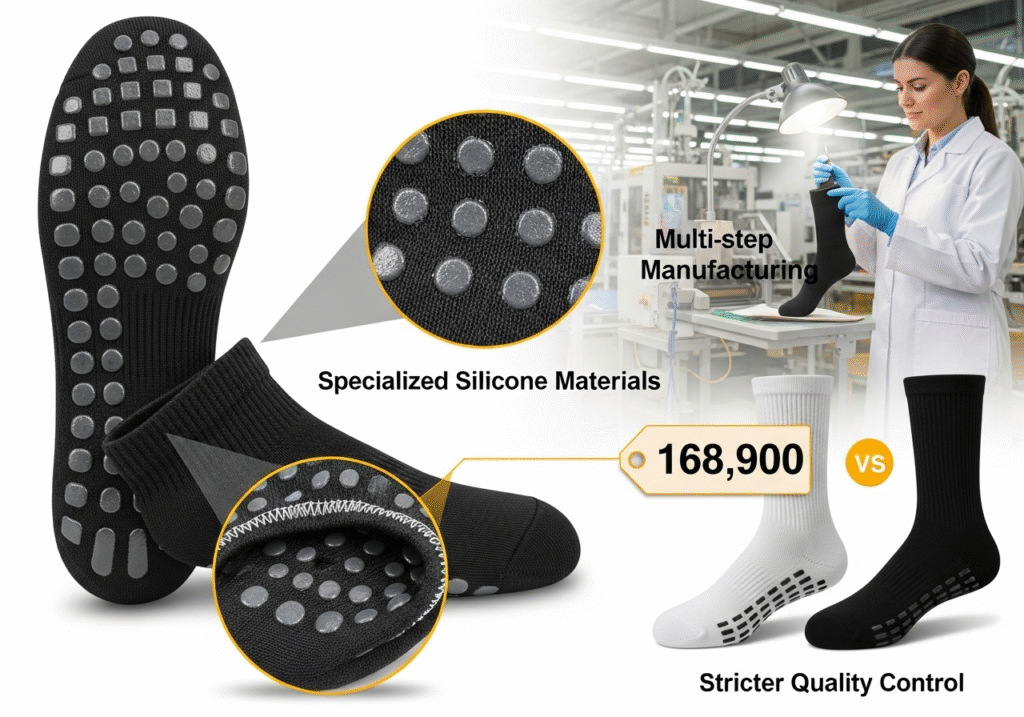
The price difference between a regular sock and a grip sock isn't just arbitrary; it's rooted in the complexity of making them. Let's break down the three main cost drivers that I manage every day on the factory floor.
1. Advanced Material Costs
A basic cotton sock uses one main material: yarn. A grip sock uses two: the yarn blend and the silicone for the grips. High-quality, non-toxic silicone costs significantly more than the yarn itself. While cheaper PVC exists, it's less durable, less safe, and feels sticky, leading to customer complaints.
2. Complex Production Process
Making a regular sock is a straightforward knit-and-sew process. A grip sock adds several crucial, time-consuming steps. After the sock is knitted and boarded, it must go to a separate station for grip application. This involves screen printing and a high-heat curing process, requiring specialized machinery and more skilled labor.
3. Rigorous Quality Control
With a regular sock, you check for holes and bad seams. With a grip sock, every single unit must be checked to ensure the grips are perfectly placed, fully cured, and won't peel off. This detailed inspection adds labor time and cost to every pair.
| Cost Component | Regular Cotton Sock | High-Quality Grip Sock |
|---|---|---|
| Yarn | Standard Cost | Standard Cost |
| Grip Material | N/A | High Cost |
| Labor (Knitting) | Base Level | Base Level |
| Labor (Grip App) | N/A | Added Cost |
| Quality Control | Basic | Intensive |
What Materials Are Grip Socks Made Of?
Choosing the wrong materials is a recipe for disaster. The product will fail, customers will complain, and your brand reputation will suffer. The secret is in the right blend.
Grip socks are made from a base yarn blend—typically cotton, nylon, and spandex for comfort and resilience—and 100% silicone for the non-slip grips.
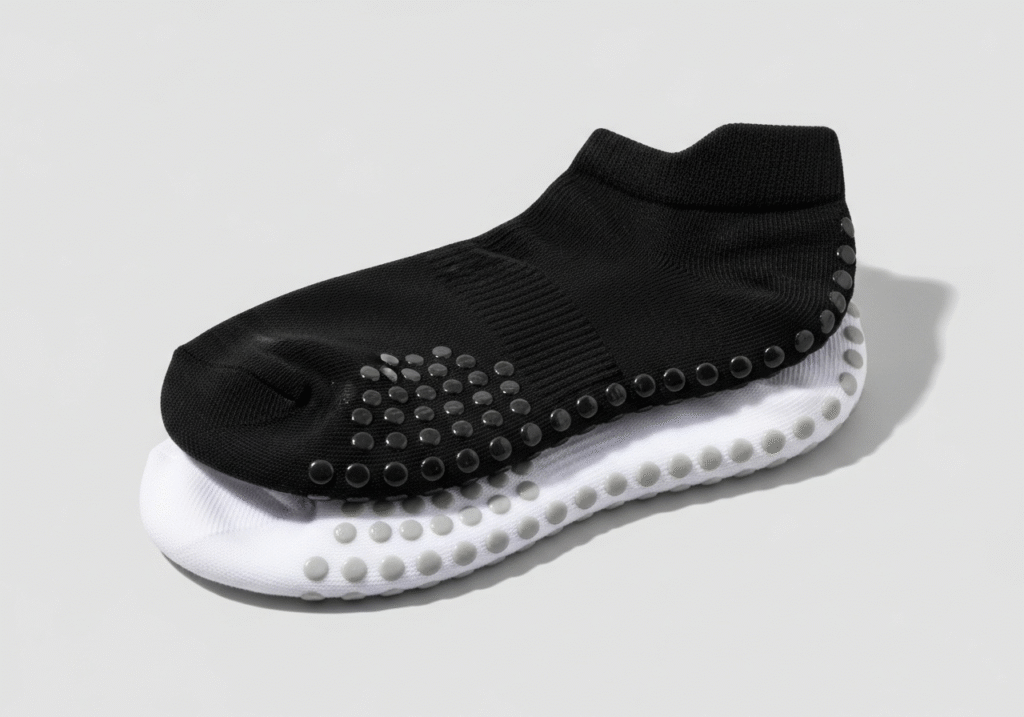
The feel, fit, and function of a grip sock depend entirely on the materials. I’ve tested countless combinations, and the best results always come from a thoughtful blend, not just the cheapest option.
The Yarn Blend
This is the heart of the sock's comfort. Each fiber has a job:
- Cotton or Bamboo: Provides softness and breathability. Cotton is the classic choice, while bamboo offers a silkier feel and natural antibacterial properties.
- Nylon or Polyester: Adds durability. These synthetic fibers resist abrasion from wear and washing, ensuring the sock lasts.
- Spandex or Elastane: Delivers the stretch. This is crucial for a snug fit that doesn't sag, especially in the arch and cuff.
The Grip Material
This is the performance engine. The choice here is usually between silicone and PVC:
- Silicone: This is the superior choice. It is non-toxic, heat-resistant, and provides excellent, flexible grip. It feels soft and doesn't stick to clean floors.
- PVC (Polyvinyl Chloride): This is a cheaper plastic alternative. It offers decent grip initially but becomes brittle over time, wears down quickly, and can have an unpleasant chemical smell. It's a corner I never cut.
| Material | Role | Cost-Effective Choice | High-Quality Choice |
|---|---|---|---|
| Base Fiber | Softness | Combed Cotton | Bamboo or Organic Cotton |
| Durability | Strength | Polyester | Nylon |
| Stretch | Fit | Spandex | Lycra® Elastane |
| Grip | Traction | PVC (Not Recommended) | 100% Silicone |
How to Produce Grip Socks?
The production line for grip socks can seem complex, with many places for costs to add up. A single mistake in the process can ruin thousands of socks.
Grip socks are made by knitting the base sock, applying silicone grips through a screen printing process, and then curing the socks in a specialized heat tunnel to permanently bond the grips.
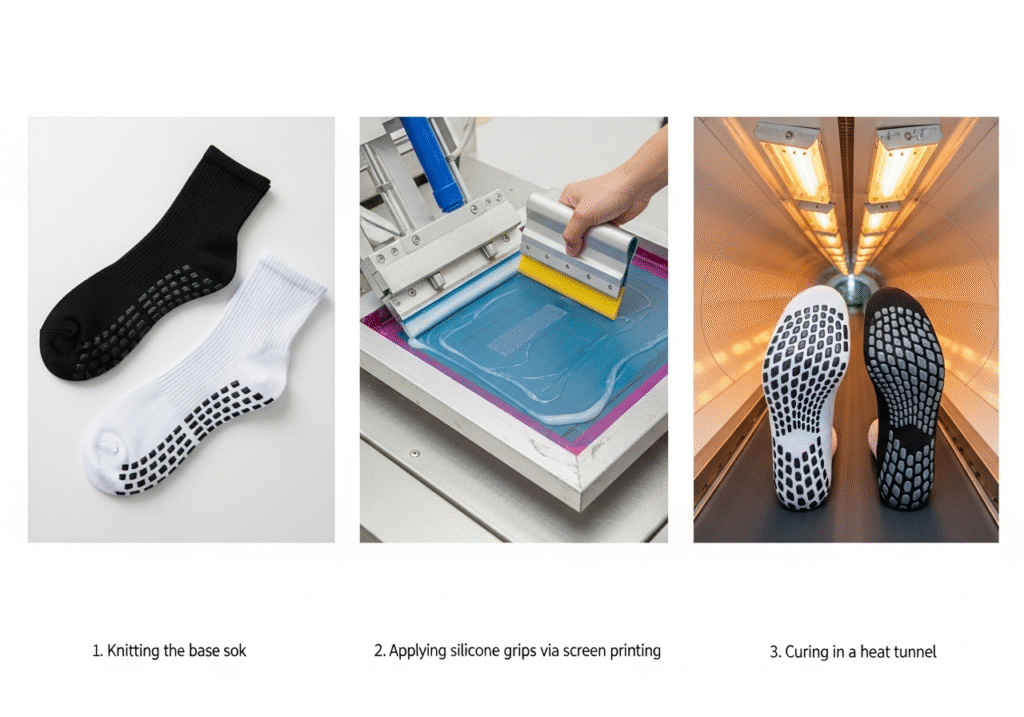
Optimizing production isn't about rushing. It's about precision and efficiency at each stage. Having worked my way up from the factory floor, I know exactly where time and money can be saved without sacrificing the final product.
Step 1: Computerized Knitting
Modern knitting machines read a digital design and knit the entire sock, including features like a seamless toe, a cushioned sole, and a compression arch band. Investing in newer, faster machines is a high upfront cost but dramatically reduces labor and error rates in the long run.
Step 2: Grip Application via Screen Printing
This is the most specialized step. Each sock is stretched onto a form. A mesh screen, created from a digital template of the grip pattern, is placed over the sole. A squeegee pushes liquid silicone through the screen, applying the pattern precisely. Automating this process is key to cost-effective scaling.
Step 3: Heat Curing
The socks then travel on a conveyor belt through a long heating tunnel1. The temperature and timing must be exact—around 150-200°C (300-390°F). This step cross-links the silicone molecules and bonds them permanently to the yarn fibers. An energy-efficient oven2 is a major cost-saver here.
| Production Stage | Key Action | Cost-Saving Tactic |
|---|---|---|
| 1. Knitting | Create the sock body | Use modern, high-speed machines |
| 2. Screen Printing | Apply silicone grip pattern | Automate the printing process |
| 3. Curing | Heat-bond the grips | Invest in an energy-efficient oven |
| 4. Quality Control | Inspect for defects | Implement in-line spot checks |
How Effective Are Grip Socks?
You might wonder if all this technology and effort creates a truly better product. If a cheaper grip peels off, then the sock is not just ineffective, it's useless.
Grip socks are highly effective when produced correctly. The effectiveness hinges on the quality of the silicone and the integrity of the heat-cured bond, which provides lasting, reliable traction.
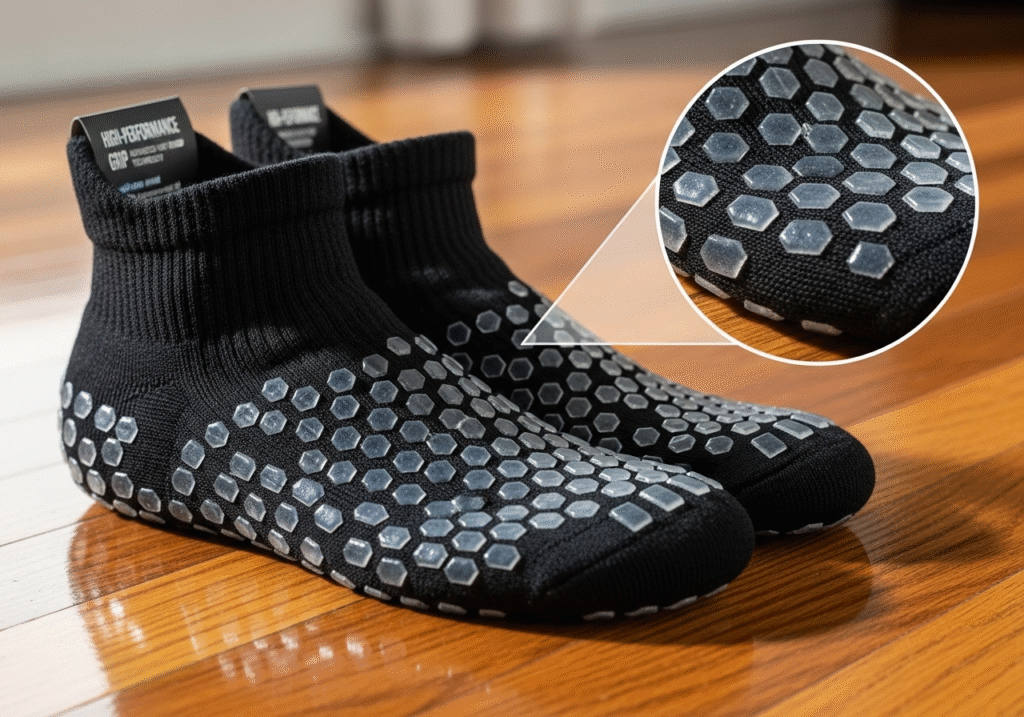
A grip sock's entire purpose is to be effective. Its value is tied directly to its performance. I measure this effectiveness in two simple ways: grip and durability.
Measuring Traction
The effectiveness of the grip is measurable. We talk about the "coefficient of friction3." On a polished wood floor, a regular cotton sock might have a friction coefficient of 0.3. A well-made grip sock with quality silicone can increase that to 0.6 or higher. This means it requires double the force to make the foot slip. This isn't just a feeling; it's a physical reality that prevents falls and improves stability.
Measuring Durability
A sock is only effective if it works after being used and washed. This is where the curing process4 is so important. A poorly cured grip sock might feel great out of the package, but the grips will crack or peel off in the wash. I tell my partners that a cost-effective sock is one the customer doesn't have to replace after a month. Durability5 is the most important feature for long-term value.
| Manufacturing Choice | Resulting Effectiveness |
|---|---|
| Cheap: PVC Grips | Low initial friction, becomes slick, not durable |
| Effective: Silicone | High initial friction, flexible, maintains grip |
| Cheap: Low-Heat Cure | Grips peel off after 1-2 washes, sock becomes useless |
| Effective: Proper Cure | Grips remain bonded for 50+ washes, long-lasting performance |
Ultimately, a truly cost-effective grip sock is one that works as promised, for a long time.
Conclusion
Cost-effective manufacturing is not about cheapness. It's about smart choices in materials, machinery, and processes to create a durable, high-performance product that builds customer trust and loyalty.
Related:
-
Understanding heating tunnels can enhance your knowledge of efficient manufacturing processes. ↩
-
Exploring the advantages of energy-efficient ovens can help you save costs and improve sustainability. ↩
-
Understanding the coefficient of friction is crucial for safety and performance in various activities. Explore this link to learn more. ↩
-
Understanding the curing process is crucial for ensuring the durability and effectiveness of grip socks, making this resource invaluable. ↩
-
Exploring the significance of durability in grip socks can help you make informed purchasing decisions for long-term value. ↩
